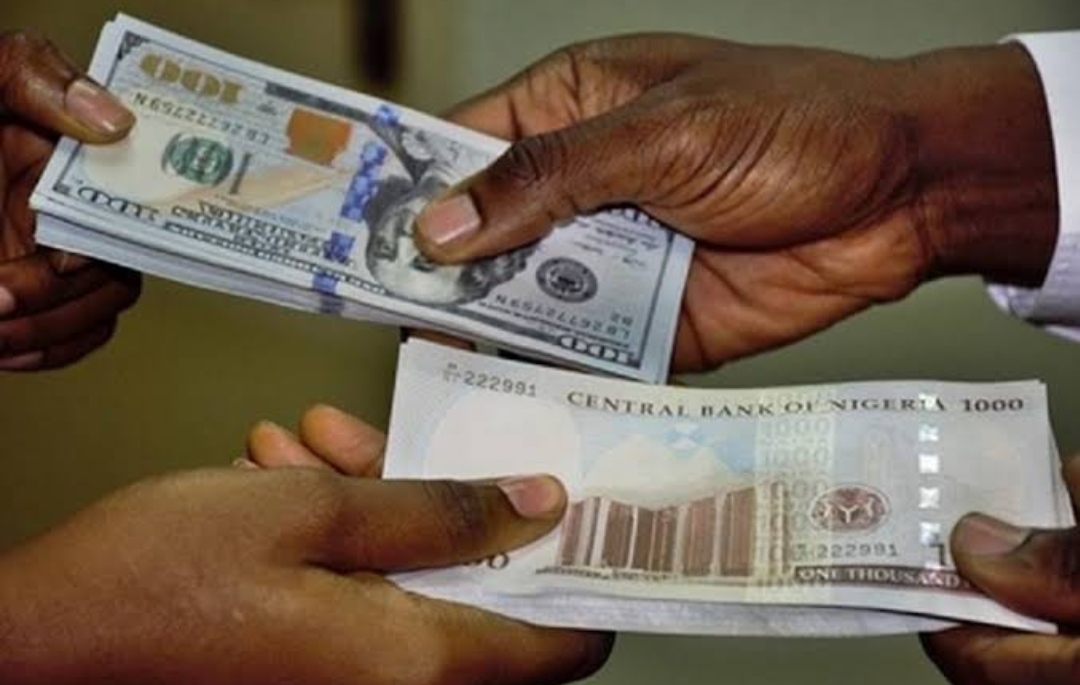The naira on Friday closed the week’s five trading sessions at a year-to-date (seven-month) high of N1,480.65 per dollar in the official foreign exchange (FX) market, supported by sustained liquidity.
The last time the naira was stronger than this level was on January 31, 2025, when it closed at N1,478.22 per dollar in the same segment of the market.
Data published by the Central Bank of Nigeria (CBN) showed that the naira appreciated by 0.5% day-on-day, as the dollar was quoted at N1,480.65, representing a gain of N7.60 compared to N1,488.25 quoted the previous day at the Nigerian Foreign Exchange Market (NFEM).
On a week-on-week basis, the local currency strengthened by N7.24, an appreciation of 0.48% from N1,487.89 per dollar recorded last Friday. Within the five trading days, the naira gained N7.95 or 0.54% over Monday’s closing rate of N1,488.60 per dollar.
In the parallel market, also known as the black market, the naira climbed to a 15-month high of N1,490 per dollar on Wednesday, driven by low demand and improved liquidity across FX markets. The last time the naira exchanged at that level was in June 2024, when it also traded at N1,490 per dollar in the black market. Compared to the previous trading session, the local currency appreciated by N25 or 1.67%, rising from N1,515 per dollar on Tuesday.
Read also: Citi sees naira sliding to 1,700/$ in 2026 on CBN easing, oil slump
Nigeria’s external reserves have also been on the rise, reaching $42.2 billion as of September 25, 2025, according to CBN data. At the recent Monetary Policy Committee (MPC) briefing, Governor Olayemi Cardoso disclosed that gross external reserves stood at $43.05 billion as of September 11, 2025, compared with $40.51 billion at the end of July. This reflected an import cover of 8.28 months. Similarly, Nigeria’s current account balance recorded a surplus of $5.28 billion in the second quarter of 2025, compared with $2.85 billion in the first quarter.
At the conclusion of its 302nd meeting held on September 22-23, 2025, the MPC reduced the Monetary Policy Rate (MPR) by 50 basis points to 27.00% from 27.50%. This was the first rate cut in over two years, following a prolonged period of monetary tightening aimed at curbing inflation and stabilising the naira.
Analysts at Comercio Partners remarked that the immediate impact of the rate cut is expected to be contained, with limited volatility anticipated in the near term.
They noted that the naira has traded within a relatively narrow band of N1,500-N1,600 per dollar in recent months, largely due to consistent CBN interventions, stronger external reserves, and closer monitoring of FX flows. These measures, according to them, have restored some market confidence and anchored short-term stability despite persistent structural challenges.
In August 2025, the CBN stepped up its intervention in the FX market, selling a total of $574 million to stabilise liquidity amid weakening inflows from key sources. This represented a 76% increase from the $326 million sold in July, highlighting the apex bank’s determination to cushion liquidity pressures in the face of tightening supply.
Data from FMDQ Exchange showed that total FX inflows into Nigeria’s FX market fell by 12% month-on-month to $3.4 billion in August, down from $3.8 billion in July. The decline followed a brief rebound in July, when inflows had risen by 24% month-on-month.
The August drop was largely driven by a sharp contraction in foreign portfolio inflows (FPIs), which fell to $1.1billion from $1.7 billion in July, representing a 35% decline.
Analysts at FBNQuest observed that the moderation in FX supply from offshore investors underscores the fragility of this source of liquidity, particularly amid global uncertainties that have heightened investor risk aversion. Despite the contraction, FPIs remained the single largest contributor to FX liquidity, accounting for about 86% of total foreign-sourced inflows and 32% of overall market inflows.
